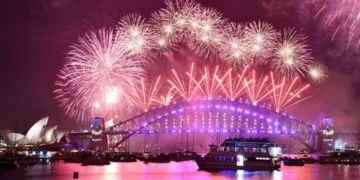Roughly a hundred thousand people gather in Times Square every year to witness the annual New Year’s Eve ball drop, and billions more join the festivities through their screens from all corners of the Earth.
For over a century, dropping the time ball on New Year’s Eve has been crucial to ushering in the new year.
But have you ever wondered why?
Come on a journey with us back to the first Times Square ball drop as we uncover the rich history behind this beautiful tradition.
The surprising origins of time balls.
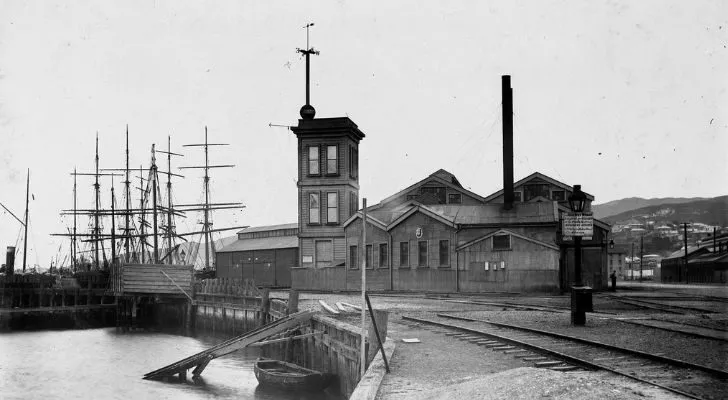
The idea of time balls came from Captain Wauchope of the British Navy, who wanted to make a universal signal to help sailors keep track of time. Back then, there wasn’t a centralized system for synchronizing time.
His original idea was to place tall flags the ships could spot from a distance. But the captain eventually settled on using a ball as the signal.
The first time ball was placed in Portsmouth along England’s South Coast in 1829. Another was installed in 1833 at England‘s Royal Observatory at Greenwich.
This ball dropped at 1 pm daily and helped sailors nearby set the time on their ship’s chronometers.
Although you have better ways to get the time on a ship today, the Greenwich time ball still works. In total, roughly 150 of these pioneering timepieces were installed worldwide.
The birth of the iconic Times Square New Year’s Eve ball drop tradition.
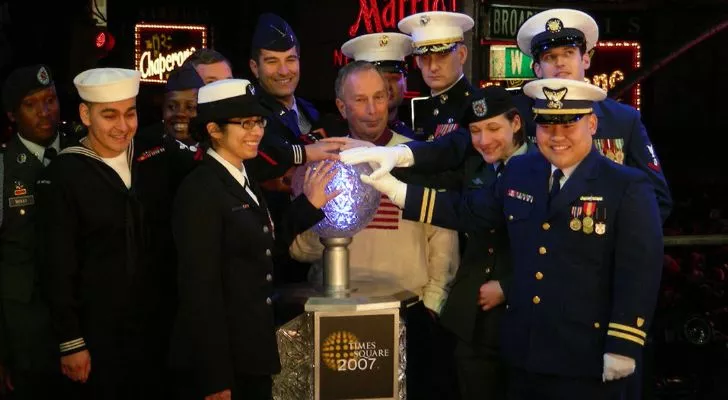
It all began with two New York Times employees, Walter Palmer, an electrician, and Adolph Ochs, a publisher.
They’d seen the Western Union Building drop a time ball daily at noon. And they thought it would be an excellent way to welcome the new year.
Once the idea was set, they had to find someone to construct the ball. This is where Jacob Starr, a metalworker from Ukraine, came into the picture.
In 1907, Ochs made the move and got Starr to construct a ball for the New Year’s Eve celebrations.
You see, during that period, only some homes had electricity. Therefore, watching the ball descend with all the lights was a spectacular experience for the crowds that gathered.
Festivities even spread further down the streets, with many people, including servers in nearby restaurants, wearing hats adorned with battery-powered lights.
New York’s New Year’s Eve ball drop has happened every year since it started, except in 1942 and 1943. This was right in the middle of WWII when New York City’s lights were dimmed to prevent attacks.
Still, crowds gathered, but instead of the loud celebrations, they greeted the new year with a minute of silence.
The structure of the first-ever New Year’s Eve time ball.
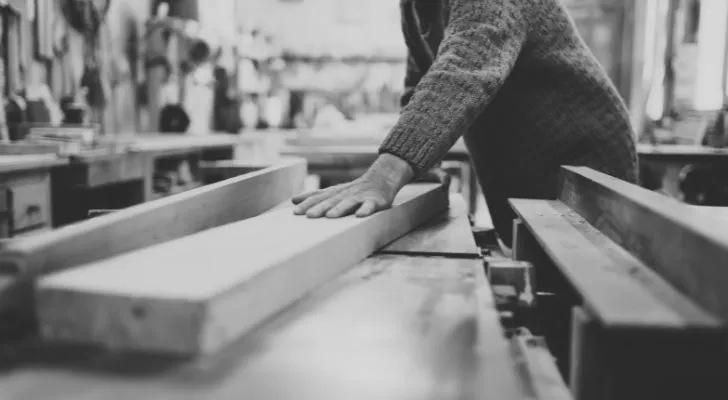
Jacob Starr made a solid iron and wood frame for the first New Year’s Eve time ball. It was lit by about 100 25-watt bulbs that illuminated the night sky when it was raised.
The ball had an impressive five-foot (1.5 meter) diameter and weighed a staggering 700 pounds (318 kilograms).
An elaborate pulley system controlled the descent of the New Year’s Eve ball.
At the start of the countdown, the ball shone brightly at the top of the flagpole. At the same time, a sign of the New Year sat at the parapet with its lights turned off.
When the clock struck midnight, the ball dropped, and its lights were switched off, while the lights on the sign at the bottom came on.
This performance gave the illusion that the ball had transformed into the New Year sign as it landed.
The transformation of the New Year’s Eve time ball.
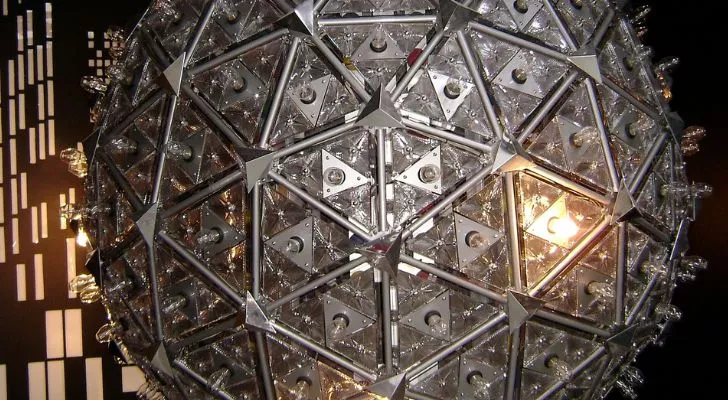
Since 1907, the Times Square ball has undergone seven significant changes.
The first redesign came in 1920 when the designers made a new one from only wrought iron, ditching the wood support. Consequently, the ball’s weight was reduced to just 400 pounds (181 kg).
Fast forward to 1955, when the iron frame was swapped for aluminum, and the ball shed more pounds. This new 150-pound (68 kg) time ball became the standard until the 80s
From 1981 to 1988, it turned into a giant apple with red lights and a green stem. In the mid-90s, the ball got some fancy additions like flashing lights, rhinestones, and computer control.
In 1999, the aluminum ball made its final drop, and it was time for a new look.
A new company, Waterford Crystal, redesigned a new ball fit for the new millennium. And just like that, it received a facelift with all the latest advanced technology.
The 2007-08 event marked the 100th anniversary of the New Year’s Eve ball drop, and again, the ball got another upgrade.
This time, they swapped the old light bulbs for brighter, energy-efficient LED lights with a more comprehensive color range.
The current Times Square ball made in 2009 weighs a whopping 11,875 pounds (5,386 kg) with a 12-foot (3.7 m) diameter. It’s covered in 2,688 crystal triangles and 32,256 LEDs that shine all year round.
The New Year’s Eve ball drop debuted over a century ago, in 1907.
Since then, this spectacular tradition has occurred almost every year, drawing hundreds of thousands to Times Square annually.
Over the years, the ball has been modified multiple times, fluctuating in size from bigger to smaller and bigger again. The lighting and control system have also received modern upgrades.
Whether you go and see it in person or tune in online, the New Year’s Eve ball drop is an iconic American tradition that we hope lasts for a long time!


